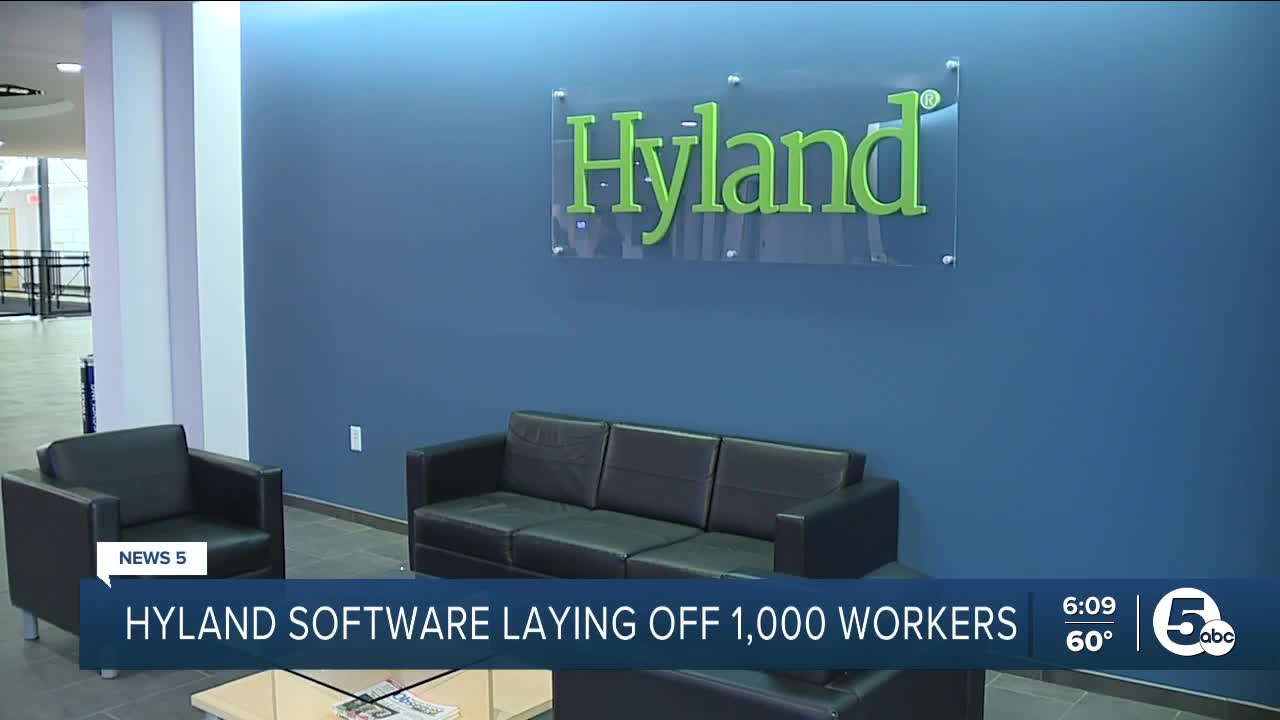With hyland software layoffs at the forefront, this story takes you behind the headlines into the heart of major changes at one of the software industry’s established players. Whether you’re an industry veteran or a curious tech observer, the events unfolding at Hyland serve as a fascinating example of how adaptation, resilience, and strategic decisions collide in today’s fast-paced business landscape.
Hyland Software, known for its enterprise content management solutions, has made significant shifts in recent years, including workforce reductions that have rippled across its global operations. From its early beginnings to its current status as a global force, Hyland’s journey is marked by innovation and adaptation but also shaped by tough choices like layoffs. Delving into the details reveals not just the when and how, but also the reasons driving these decisions, their impact on employees, and what it means for the broader tech sector.
Overview of Hyland Software

Hyland Software is a prominent enterprise software company, best known for its content services and process automation solutions tailored to support document management, workflow, and digital transformation across industries. Its flagship platform, OnBase, is widely used by organizations seeking to improve operational efficiency, manage records, and enhance customer experiences. The company’s offerings support clients in sectors such as healthcare, financial services, government, higher education, and insurance.
Founded in 1991 in Westlake, Ohio, Hyland began as a small operation focused on innovative document management. Over time, Hyland has expanded both its product suite and its global reach through organic growth and strategic acquisitions, including the purchase of Perceptive Software and Alfresco. These key milestones enabled the company to broaden its technology portfolio while cementing its reputation as a leader in information management.
Hyland’s workforce and office footprint have grown significantly, with operations in multiple countries and a diverse set of clients worldwide. The table below highlights the company’s growth and major milestones.
| Year | Employee Count | Office Locations | Notable Events |
|---|---|---|---|
| 1991 | ~10 | Westlake, Ohio (HQ) | Company founded |
| 2010 | ~1,000 | US, initial international expansion | Rapid growth and industry recognition |
| 2017 | ~2,200 | US, EMEA, APAC | Acquired Perceptive Software |
| 2020 | ~3,500 | 15+ global offices | Acquired Alfresco |
| 2023 | ~4,000 | North America, Europe, Asia-Pacific | Post-acquisition integrations; significant restructuring |
Timeline of Layoffs at Hyland Software: Hyland Software Layoffs

Hyland Software, like many tech companies in recent years, has undergone several rounds of layoffs as a response to changing market conditions and internal restructuring. These layoffs affected various departments across different regions, reflecting broader trends within the technology sector.
The following table summarizes major Hyland layoff events, including when they occurred, the number of employees impacted, and the areas most affected.
| Date | Number of Employees Affected | Department/Division | Region |
|---|---|---|---|
| August 2020 | ~130 | Product Development, Support | Global |
| April 2023 | ~1,000 | Multiple (including R&D, Operations) | US, EMEA, APAC |
| September 2023 | ~100 | Sales, Administration | North America, EMEA |
During each period, company leadership communicated reasons for these actions via internal announcements and external press releases. The April 2023 layoffs, for example, were attributed to a company-wide restructuring following recent acquisitions and a strategic shift toward cloud solutions. Each announcement emphasized Hyland’s commitment to supporting both affected employees and the company’s long-term goals.
Reasons Behind the Layoffs
Understanding the rationale for workforce reductions at Hyland Software requires examining both internal decisions and broader industry dynamics that have influenced the company’s direction. Several contributing factors emerged during the layoff periods, reflecting shifts in demand, business strategy, and the economic landscape.
Layoff explanations in official statements and news coverage usually point to a combination of factors. These commonly cited reasons are detailed below, providing context for the decisions made by company leadership.
- Economic uncertainty in the global tech sector, leading to budget realignment and cost-cutting measures.
- Integration challenges and redundancies stemming from large-scale acquisitions such as Perceptive Software and Alfresco.
- Accelerated pivot to cloud-based products, requiring shifts in workforce skillsets and organizational structure.
- Changing customer needs, particularly a decrease in demand for on-premises solutions.
- Efforts to streamline operations and improve overall efficiency amid increasing competition.
These influences, both external and internal, collectively contributed to Hyland’s decision to reduce its workforce as part of a broader effort to remain competitive and agile in a rapidly evolving marketplace.
Impact on Employees and Company Culture
Layoffs at Hyland Software have had a significant impact on both affected employees and those who remain. Workforce reductions often create uncertainty, lower morale, and can severely test the cohesiveness of internal teams. The company has attempted to mitigate these effects through a range of support measures and severance packages.
The table below Artikels typical support mechanisms offered by Hyland to departing employees during layoff periods.
| Support Measure | Description | Duration | Eligibility |
|---|---|---|---|
| Severance Pay | Financial compensation based on tenure and position | 4–12 weeks | All laid-off employees |
| Career Counseling | Outplacement services and job search support | Up to 3 months | Full-time staff |
| Healthcare Continuation | Extended health benefits post-employment | 1–3 months | US-based employees |
| Retraining Programs | Access to online courses and skill development platforms | Variable | Voluntary opt-in |
Beyond immediate support, layoffs have led to shifts in workplace dynamics. Remaining staff often face increased workloads, ambiguity about job security, and a need to adapt to new roles or technologies. While Hyland emphasizes transparency and open communication, some employees report heightened stress or changes in engagement, typical outcomes observed in many tech organizations undergoing similar transitions.
Public and Industry Reactions
The software industry, analysts, and media outlets have closely followed Hyland Software’s restructuring and layoff announcements. Public responses have ranged from empathy for affected employees to analytical commentary on the broader implications for the tech sector.
Key public statements and headlines include:
- “Hyland Software lays off hundreds amid post-acquisition restructuring” – TechCrunch
- “Cleveland-based Hyland announces workforce reduction as cloud transition accelerates” – Cleveland.com
- “Industry consolidation drives major changes at Hyland, impacting global teams” – The Wall Street Journal
- “Hyland’s layoffs signal broader shifts in enterprise software demand” – CRN
Reputationally, industry observers acknowledge that such moves are often necessary but can impact employee trust and stakeholder confidence. The company’s handling of communication, severance, and transparency is frequently highlighted as an indicator of its long-term organizational health.
Strategies Implemented Post-Layoffs
After the layoffs, Hyland Software took several steps to stabilize operations and reposition the company for the future. These strategies were designed to realign resources, sharpen business focus, and reassure both employees and customers about the company’s direction.
Actions included:
- Focusing product development efforts on cloud-native solutions and phasing out legacy on-premises offerings.
- Redefining organizational structure to streamline decision-making and reduce management layers.
- Investing in employee reskilling programs, particularly for roles supporting cloud and AI-driven technologies.
- Enhancing internal communication channels to address concerns and maintain transparency.
- Strengthening customer support and engagement to retain key clients amid the changes.
Hyland communicated these adjustments through all-hands meetings, internal newsletters, and direct outreach to impacted teams and clients. The company also participated in industry events and webinars to reinforce its commitment to innovation and customer value.
Comparison with Layoffs in the Broader Tech Industry
Hyland Software’s layoffs have mirrored industry-wide trends, where many technology firms have reduced headcounts in response to economic pressures, shifts in technology adoption, and post-pandemic recalibrations.
The table below compares Hyland’s workforce reductions to those at similar tech companies.
| Company | Layoff Date(s) | Percentage of Workforce | Stated Reason |
|---|---|---|---|
| Hyland Software | 2023 | ~25% | Restructuring post-acquisition, shift to cloud |
| Dropbox | 2023 | ~16% | AI and automation focus, reduced demand |
| Salesforce | 2022–2023 | ~10% | Cost realignment, macroeconomic trends |
| Zendesk | 2022 | ~8% | Restructuring after acquisition |
| Microsoft | 2023 | ~5% | Strategic shift, economic conditions |
While the proportion of affected employees at Hyland was higher than at some peers, the underlying reasons—market shifts, technology focus, post-merger integration—are consistent with broader patterns in the tech sector. These events collectively highlight the volatile nature of employment in technology and the importance of agility for companies facing continual disruption.
Support Resources for Laid-Off Employees
Employees impacted by layoffs can benefit from various external resources aimed at helping displaced tech workers transition into new opportunities. Industry organizations, peer networks, and tailored job boards play a vital role in providing community support and career guidance.
Some recommended resources and organizations include:
- Outplacement services specializing in tech roles (e.g., RiseSmart, Lee Hecht Harrison)
- Tech industry job boards such as Dice, Built In, and AngelList
- Reskilling programs from organizations like Coursera, Udacity, and General Assembly
- Professional groups and support networks like TechWorkers Coalition and Women in Technology International (WITI)
- LinkedIn groups dedicated to tech job seekers and alumni of Hyland Software
Hyland has also partnered with select recruitment agencies and tech reskilling providers to offer workshops and job fairs exclusively for affected employees, further assisting their transition to new roles in the industry.
Long-Term Implications for Hyland Software, Hyland software layoffs
The long-term impacts of layoffs at Hyland Software are likely to shape its growth prospects, innovation capacity, and market position. While workforce reductions can lead to short-term cost savings, the company faces the challenge of maintaining momentum in an increasingly competitive space.
Potential future scenarios include:
- Accelerated investment in cloud-native platforms, with new product releases aligning to industry trends.
- Stronger focus on core verticals like healthcare and financial services to drive customer retention and acquisition.
- Reshaping of company culture, with an emphasis on agility, upskilling, and cross-functional collaboration.
- Potential for further mergers, acquisitions, or divestments as part of strategic realignment.
- Rebuilding company reputation and employer brand through transparency and renewed engagement initiatives.
The ultimate trajectory for Hyland will depend on its ability to adapt to technology trends, retain key talent, and create value for both customers and stakeholders amid ongoing industry changes.
Concluding Remarks

Reflecting on the hyland software layoffs, it’s clear that such events reach beyond numbers and press releases, influencing careers, culture, and the company’s future direction. As Hyland navigates its next chapter, these developments offer valuable lessons on agility, employee support, and the evolving nature of work in the tech industry.
FAQs
How many rounds of layoffs has Hyland Software conducted in recent years?
Hyland Software has undergone multiple rounds of layoffs, particularly since 2020, with significant reductions announced in both 2023 and 2024.
What departments or roles have been most affected by the layoffs?
Layoffs have impacted a variety of departments, often including product development, sales, and support teams, though specifics can vary by round.
Are laid-off employees provided with severance or support?
Yes, Hyland typically offers severance packages and support measures such as outplacement services and access to career resources for affected staff.
How has Hyland Software communicated layoffs to its employees?
Layoffs are generally communicated through official company memos, virtual town halls, and direct communication from leadership.
What should affected employees do next?
Affected employees are encouraged to utilize available support resources, connect with tech industry job boards, and consider reskilling or networking opportunities.
